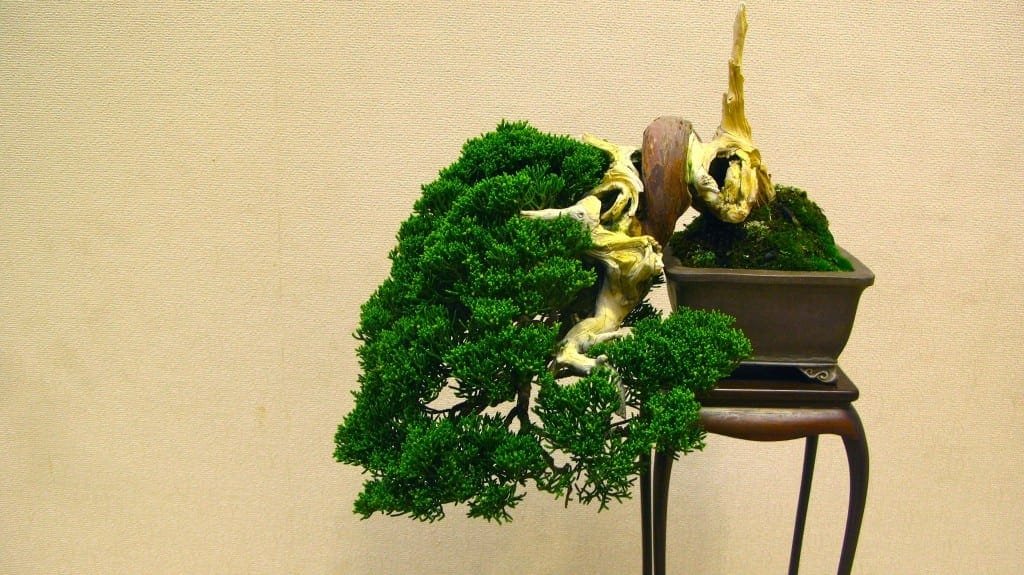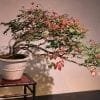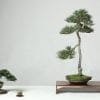The formation of a bonsai tree requires considerable patience, time and artistic creativity. When a craftsperson designs a bonsai, he or she will spend years making one perfect specimen. Therefore, bonsai trees often remain in families for hundreds of years as the tree is passed down through the generations.
The Significance Of Bonsai Trees
Bonsai trees are symbolic in that they represent life. Each tree is a living sculpture that will never stop growing and changing. With their deep meaning, bonsai trees are honored in numerous cultures especially in Asia. When art is made from a living source such as a plant, it is never complete. As the tree grows within a family, members continue to add their own artistic touch to the bonsai encouraging it to change.
In Japan, bonsai trees are often a garden feature due to their small size. The tiny trees allow cultivators to enjoy nature in miniscule outdoor areas. With the lack of growing space in Japan, gardeners prefer to create a miniaturized version of large landscaping. Often, Japanese cultivators will grow an entire scaled down garden in a balcony or flower box.
Small Japanese gardens typically include all of Mother Nature’s seasons along with small-scale versions of mountains, islands, waterfalls and even oceans.
A Living Heirloom
With proper care, a bonsai tree can live for hundreds of years, and for many families, this significance verifies nature’s enduring spirit. Bonsai trees are a valued family treasure and can be compared to the custom of passing down an old family bible through many generations.
Bonsai Qualities
When a bonsai cultivator is productive in forming a tree, he or she can expect the tree to have human characteristic comparisons such as beauty, honesty and kindness. The positive features in a bonsai tree should encourage similar traits within a family, which will hopefully lead them to flourish and thrive. In fact, Zen Buddhism is responsible for providing this enlightened attitude to a growing bonsai tree.
Bonsai Development
Bonsai trees are traditionally grown by men in Japan while women typically make flower arrangements. Several tree species are preferred for bonsai creation due to their longevity. Popular bonsai trees include juniper, Japanese cedars and Japanese white pine. Other desired varieties are apricot-plum trees, cherry trees and Japanese maples. Most of these tree types must be grown outdoors. However, bonsai owners will bring them inside on occasion to enjoy their beauty while sharing them with family and friends.
The Value Of Ancient Bonsai Trees
Japan is famous for growing bonsai trees and enthusiasts will find a large number of trees located in the country that are up to 200 years old. In fact, 500-year-old trees remain in existence.
Old trees are extremely valuable. For instance, a 50-year-old maple tree formed into a softball sized plant may be sold for an estimated $5,000. Furthermore, a well-maintained pine tree that is about 7-foot tall could cost up to $35,000 while ancient bonsai trees typically sell for $200,000. When auctions have been held selling historic bonsais, the old trees have gone for over $1 million.
Types Of Bonsai Trees
Bonsai trees have five main designs. For example, cultivators can grow them toward the sky in an upright position, with a curved trunk to mimic hanging from a cliff, slanting toward the ground, flowing outward from the trunk of the tree and with a slight trunk and diminished branches.
The trees may be formed into several subcategories such as trees with twisted trunks, bonsais that grow among rocks, trees meant to look windblown and forests that include as many as 30 trees. Families that have passed down their trees for many years will often have samples in every style.
Bonsai Features
Bonsai trees are typically one to four feet tall. However, some families may own a shohin tree, which is a miniature bonsai that is smaller than six inches tall. The shito is even tinier at only three inches and are grown in small pots that are the size of a thimble. The mini-bonsais may be cultivated in small areas and are easy to take care of.
In some cases, cultivators will build an entire bonsai tray with small rocks, moss, sand and other varieties of plants growing and residing amongst the bonsai tree.
Bonsai Tree Care
When parents pass the skill of bonsai creation to their children, they are teaching them life skills. For example, the routine of cautiously trimming a tree will help children foster patience while watering a tree daily and reviewing it for health will encourage children to be consistent. Watching a bonsai tree flourish through their careful efforts will promote a child’s self-confidence.
Children will also have the opportunity of passing down their prized bonsai tree to their own children and grandchildren.
A bonsai tree that has enjoyed a long life within one family will show the creativity and artistic capabilities of its family. When cultivating the tree, growers will learn from the efforts of past family members while imparting their own skills to future growers.


